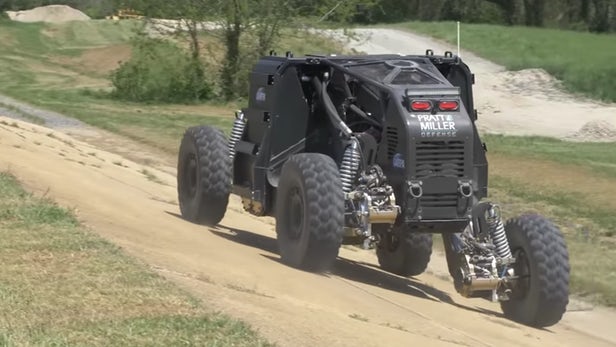It was back in 2014 when DARPA launched the Ground X-Vehicle Technology (GXV-T) program. This was aimed to develop breakthrough technology in ground combat vehicles and more importantly, what is weighing them down. Anti-tank guns are being made bigger and bigger. As a result, the armor on the tanks is being increased so much that they weigh as much as 72 tons.
This makes it very hard to deal with all aspects of the tanks including production, deployment, and maintenance. The massive weight also damages roads and bridges that haven’t been designed for these tanks. DARPA has been working to make these technologies lightweight for some time now and demonstrated some impressive ideas last month.
1. Reconfigurable Wheel Track (RWT):
The tracks provide a much better traction in sand, mud, and dirt, but when it comes to roads, wheels allow you to move much faster. Scientists from Carnegie Mellon University have designed a transforming wheel that can either function as a wheel as well as a track on the push of a single button and the entire transition only takes two seconds.
2. Electric In-Hub Motor:
The standard military rim size is 20 inches. QinetiQ has designed an electric hub motor that fits in with the rim and is fit for combat vehicle use. Having all the benefits of a regular motor like increased acceleration, torque, and traction benefits, the QinetiQ motor has a three-stage gearing, internal thermal management, and a liquid-cooled brake system
3. Multi-Mode Extreme Travel Suspension (METS):
4. Enhanced 360-Degree Awareness With Virtual Windows:
Windows can be points of vulnerability in the ground combat vehicles. Honeywell International eliminated them entirely by introducing a system where the driver sits in the cockpit and sees the outside world through near-eye VR goggles that turn the cabin transparent for a 360-degree vision.
5. Virtual Perspectives Augmenting Natural Experience (V-PANE):
Raytheon BBN Technologies has also used the augmented vision in an impressive way. It allows the drivers to see the world outside through a range of different perspectives. These perspectives are generated from a number of video cameras and LiDAR sensors. The system creates a real-time 3D model of the vehicle’s surroundings and creates views augmented with the model of the vehicle to assist with maneuvers. This technology might also be able to assist with targeting systems.
6. Off-Road Crew Augmentation (ORCA):
This is a simple system that uses cameras and sensors to map out the terrain in the path of the vehicle to plan the safest and quickest route through. What makes the ORCA system impressive is that it has the capability to take over and self-driving the vehicle in an off-road situation.
These technologies are still under development and are in the prototype phases as of yet. You can check out these DARPA technologies in the video below:

